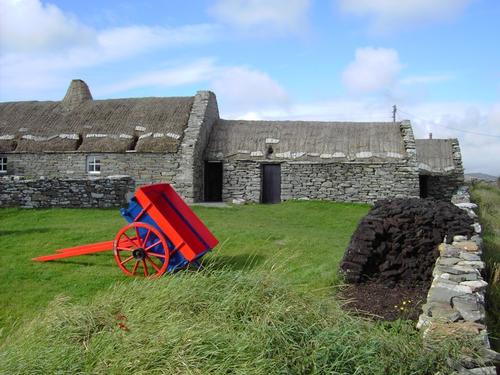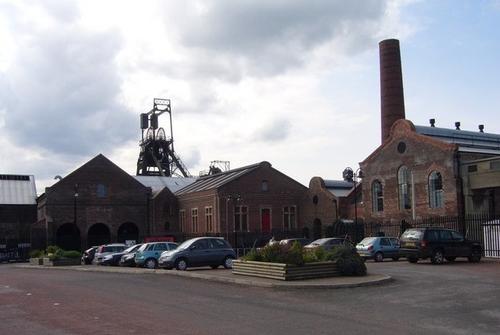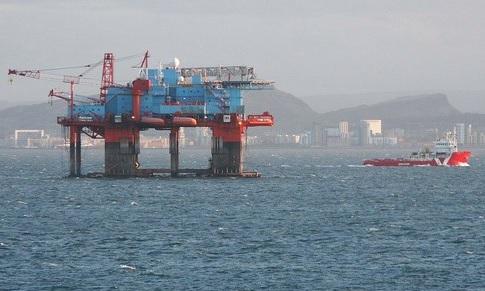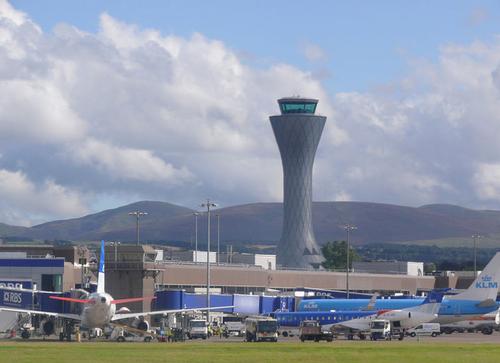SCOTLAND
Economy

Economy
Cities in SCOTLAND
| Edinburgh | Glasgow |
Popular destinations UNITED KINGDOM
| England | Northern ireland | Scotland |
| Wales |
Economy
General
 Head office of the Bank of Scotland, EdinburghPhoto: Rept0n1x CC 3.0 Unported no changes made
Head office of the Bank of Scotland, EdinburghPhoto: Rept0n1x CC 3.0 Unported no changes made
For centuries, the economic development of Scotland, partly due to its peripheral location, has lagged behind that of England, resulting in large-scale emigration. Exploration and exploitation of oil and gas have seen an economic upturn since the 1960s. The services sector has experienced strong growth.
Employment in the coal and steel industry, mining and shipbuilding has declined drastically, forcing it to focus on other industries and services.
Even in the mid-1960s, industry accounted for 32% of gross national product and 35% of the population worked in factories. In the mid-1990s, the percentage was only 22 and 20%, respectively. In 2017, industry will only account for around 10% of GDP. Of the ten employees, seven are now employed in the services sector.
Agriculture, livestock, forestry and fishing
 Crofthouse Museum ShetlandPhoto: Dbachmann CC 3.0 no changes made
Crofthouse Museum ShetlandPhoto: Dbachmann CC 3.0 no changes made
Although large parts of the country have an agricultural character, approximately 80% of the Scottish territory is used for agricultural purposes, agriculture is not the mainstay of the economy; mainly grain (barley, wheat, oats), further potatoes, turnips and vegetables are grown, sometimes in the form of crofting*, a primitive form of agriculture, which is produced not for the market, but for own use.
*The small communities in the Highlands and on a number of islands (particularly the Shetland, Orkney Islands and the Isle of Lewis) are made up of crofting municipalities, clusters of small farms scattered around a few acres of land. The crofters (leaseholders of a divided farm) each have their own piece of rented (building) land enclosed by a wall, while they share the common land where the cattle graze.
Most dairy farms are located in the South West, while the most fertile agricultural areas are in North East Scotland.
Climate and natural conditions favor livestock farming (sheep and cattle); rough grazing (extensive livestock farming on natural, poor pastureland) covers a large part of the total agricultural area.
Remarkably, nearly 90% of rural Scotland is privately owned, spanning more than 1,500 estates. All those estates belong to several hundred people.
Reforestation has been widespread in mountainous areas since 1919, to the detriment of sheep farming but to employment.
Along the entire coast, fishing still plays a vital role in the economy (haddock, cod, herring, shellfish). In addition, salmon farming has grown enormously in recent decades. Aberdeen, Peterhead, Fraserburgh, Kinlochbervie, Lerwick and Ullapool are important places with fishing industry.
Mining Industry
 National Mining Museum ScotlandPhoto: Kim Traynor CC 3.0 Unported no changes made
National Mining Museum ScotlandPhoto: Kim Traynor CC 3.0 Unported no changes made
The country owns, among other things, coal (in Lothian, Fife an Ayr) and iron ore (in the southwest, Strathclyde). As in other parts of Great Britain, mining is declining very sharply. Many mines have been closed in recent decades and underground mining has virtually come to an end. Coal extraction only takes place in opencast mining.
The search for oil started in 1964 and the first oil well was discovered three years later. Large fields followed, all of which were quite far out to sea. Due to the great distance to the mainland, the construction of pipelines and the construction of gigantic platforms were necessary.
Industry
 Oil platform off the coast of ScotlandPhoto: Simon Johnston in the public domain
Oil platform off the coast of ScotlandPhoto: Simon Johnston in the public domain
With the exception of the North East (Grampian), Scottish industry is almost entirely concentrated in the central lowlands. The western part of this, with Glasgow as its center, has developed less favorably than the eastern part, with Edinburgh as its center; it depends too much on traditional basic industries such as mining, shipbuilding, steel and textiles, and whiskey distillation.
Developments in shipbuilding since the 1980s are particularly worrying; government support and missions seek to keep as many employees in this industry as possible to work.
The center of gravity of Scottish industry has shifted from the west to the southeast and northeast, where North Sea oil and light industry have created new jobs. The Grampian region, with Aberdeen as its main city, has developed particularly favorably. It is true that traditional industries (food, paper, whiskey, mechanical engineering) have deteriorated here, but oil extraction has given new impulses here.
The most successful industry in the Scottish industry is the electrical engineering industry (including in Glasgow, Edinburgh and Dundee), mainly driven by foreign, particularly US, investments. The microelectronics industry is well developed. Stronger branches also include the chemical and pharmaceutical industries. The wood processing industry is increasing in importance.
Textile Industry
 Tweed ScotlandPhoto: Public domain
Tweed ScotlandPhoto: Public domain
In the southeastern part of Scotland, the textile industry is still thriving, and the fifty million sheep provide the raw material for this industry. The Wool Trail, the Scottish Borders Woolen Trail, passes through several towns that have depended on the wool industry for centuries.
The jerseys that are made in the Shetland Islands and on Fair Isle are very popular because of their traditional model and beautiful patterns. The "tweed" is a woven wool fabric, originally in gray, blue or black. From the early 19th century, a mixed tweed fabric also came on the market, which is now the most sold.
This industry has been struggling, yet still generates around £1.5 billion and some 40,000 are still employed in the textile industry, mainly concentrated in the Borders.
Traffic and financial services
 Edingurgh Airport ScotlandPhoto: Ad Meskens CC 3.0 Unported no changes made
Edingurgh Airport ScotlandPhoto: Ad Meskens CC 3.0 Unported no changes made
Scotland has a good road and rail network and four international airports: Edinburgh, Glasgow, Aberdeen and Prestwick, and several small airports, mainly for local traffic.
Edinburgh has developed into an important financial center and many major insurance companies have also established themselves in Scotland.
Sources
Berkien, G. / Schotland
Kosmos-Z&K
Berkien, G. / Schotland
ANWB
Larrimore, D. / Schotland
Kosmos-Z&K
Levy, P. / Scotland
Marshall Cavendish
Patitz, A. / Schotland
Van Reemst
Schaff, B. / Schotland
Kok Lyra
Schotland
Cambium
Schotland
Lannoo
Schotland
Michelin Reisuitgaven
Schotland
Van Reemst
Smallman, T. / Scotland
Lonely Planet
Stoks, F.T. / Schotland
Gottmer
Summers, G. / Schotland
Van Reemst
Tschirner, S. / Schotland
ANWB
Wamel, D. van / Schotland en Noord-Engeland
Babylon-De Geus
CIA - World Factbook
BBC - Country Profiles
Last updated December 2025Copyright: Team The World of Info